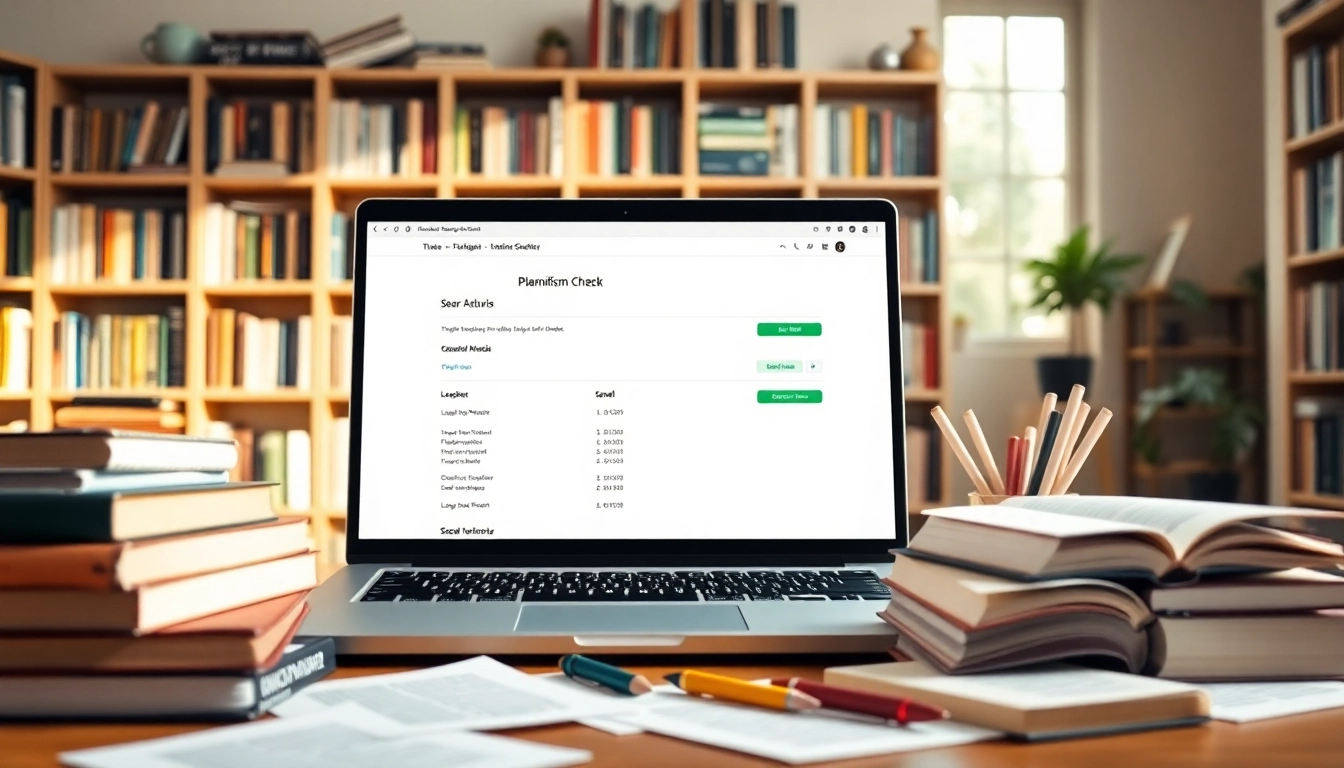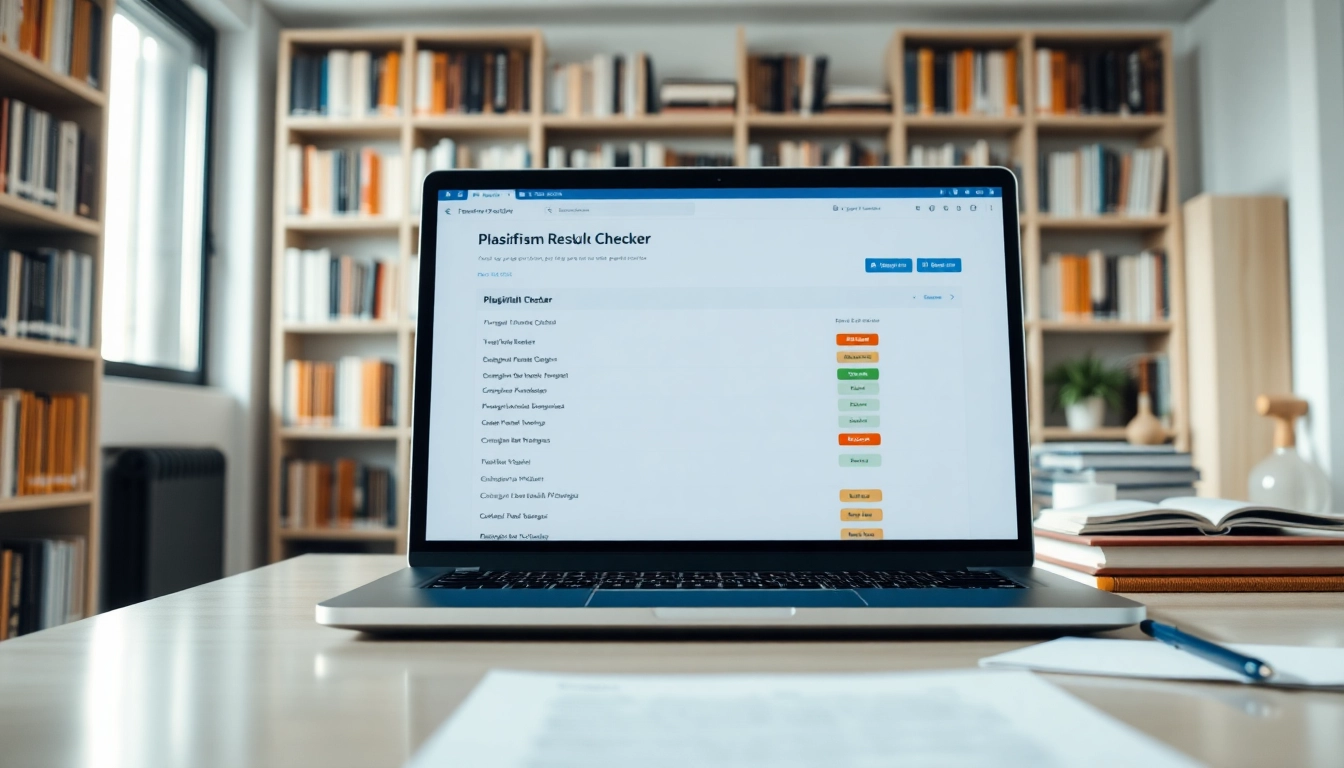
Understanding Plagiarism and Its Consequences
In an increasingly digital world where information flows freely and rapidly, the issue of plagiarism has become more prevalent. Plagiarism, the act of using someone else’s work, ideas, or expressions without proper acknowledgment, can have significant consequences both academically and professionally. A robust plagiarism checker can play a crucial role in maintaining integrity by ensuring that content creators respect intellectual property and produce original work.
What is Plagiarism?
Plagiarism can be defined as the practice of taking someone else’s work or ideas and passing them off as one’s own. This encompasses not only direct copying of text but also paraphrasing without credit, using multimedia (like images or videos) without permission, and even self-plagiarism, where one reuses their own previous work without acknowledgment. The essential element that characterizes plagiarism is the lack of attribution to the original source.
Implications of Plagiarism in Academics
In the academic realm, plagiarism can result in severe penalties including failing grades, expulsion from educational institutions, and damaged reputations. Academic institutions are keen on promoting original work as it reflects the integrity and authenticity of scholarship. Notably, many institutions have strict honor codes and utilize various plagiarism detection tools to uphold these standards. Students must understand the serious repercussions of their actions and the importance of giving credit to the original authors of any works they reference.
Legal Consequences of Plagiarism
Beyond academic disciplinary measures, plagiarism carries legal risks. Copyright infringement, a form of plagiarism, can lead to lawsuits, fines, and other legal liabilities. Copyright law provides protection to creators of original works, and failing to adhere to these laws can have significant financial and legal repercussions. Understanding these aspects underscores the importance of utilizing a plagiarism checker to ensure compliance with copyright regulations.
Types of Plagiarism to Avoid
Understanding the different types of plagiarism is essential for anyone involved in writing, research, or content creation. Knowing what to avoid can help in maintaining ethical standards and upholding the integrity of one’s work.
Direct Plagiarism Explained
Direct plagiarism occurs when an individual copies text verbatim from a source without citation or acknowledgment. This is often considered the most egregious form of plagiarism and can easily be identified by plagiarism detection software. To avoid this, it is vital to use quotation marks when directly quoting a source and to properly cite the source according to the required referencing style.
Self-Plagiarism and Its Risks
Many do not realize that self-plagiarism is also a significant concern. This occurs when a writer reuses portions of their own previous work and submits it as new content, without appropriate acknowledgment. While it may feel acceptable to reuse one’s own work, it can mislead readers and violate the standards set by academic or publishing institutions. It’s essential to check with guidelines and possibly use a plagiarism checker to avoid self-plagiarism.
Paraphrasing vs. Plagiarism
Paraphrasing is a legitimate way to cite sources by rewording ideas, yet it can cross the line into plagiarism if not done properly. For paraphrasing to be ethical, it must significantly alter the original text while still giving credit to the source. A proper plagiarism checker can help detect instances where paraphrased material closely resembles the original text, ensuring all sources are appropriately credited.
Choosing the Right Plagiarism Checker
With a variety of plagiarism checkers available, selecting the appropriate tool for your needs is crucial. Not all plagiarism detection tools offer the same features, accuracy, or user experience. Understanding what to look for can enhance your writing process and improve the originality of your work.
Features to Look For
When choosing a plagiarism checker, consider features such as detection accuracy, database size, and the ability to check multiple file types (like PDFs and Word documents). Some tools also provide detailed reports, highlighting where plagiarism has occurred and suggesting where citations are needed. Additional features may include grammar checks and writing style tips, contributing to the overall quality of the content.
Comparative Review of Tools
There is a broad spectrum of plagiarism detection tools on the market. Some tools are free, while others are paid services offering more comprehensive features. When evaluating these tools, it’s essential to compare them based on their detection rates, ease of use, integration capabilities with word processors, and available support. Ultimately, the best tool for you will depend on your specific needs, such as whether you’re a student, educator, or professional writer.
User Experience and Interface Considerations
The user interface plays a vital role in how effectively a plagiarism checker can be used. A clean, intuitive interface not only improves the user experience but also facilitates quick analysis of documents. Check for features such as bulk upload capabilities, readability of reports, and other navigational features that make the process smoother.
How to Effectively Use a Plagiarism Checker
Using a plagiarism checker correctly is key to achieving the best results. This involves understanding how to analyze your document, interpret the reports generated, and make the necessary edits.
Steps to Analyze Your Document
To use a plagiarism checker, start by preparing your document according to the tool’s requirements. This might involve formatting your file or separating different sections. Once your document is ready, upload it to the checker and run the analysis. Some tools may provide instant feedback, while others may require a few minutes to analyze your work.
Interpreting Plagiarism Reports
Once your document has been scanned, you should receive a detailed report outlining any potential plagiarism detected. Read this report carefully, as it will detail the instances of similarity and suggest potential areas for correction. Each checker might present its findings differently, so understanding how to read and interpret these results is fundamental in ensuring all necessary adjustments are made.
Making Edits Based on Feedback
After reviewing the plagiarism report, the next step is to make the necessary edits. This might involve rephrasing sections, adding citations, or even removing content that doesn’t align with your original thoughts. Always ensure to check your work again after making changes to confirm that all issues have been resolved. Using a plagiarism checker iteratively can help refine your work until it meets the desired standards.
Staying Original: Best Practices for Writing
Maintaining originality is crucial in any form of writing. By adopting best practices, you can enhance your writing while minimizing the risk of plagiarism.
Proper Citation Techniques
Understanding how to cite sources properly is essential for academic and professional integrity. Familiarize yourself with different citation styles, such as APA, MLA, or Chicago, to ensure that you are attributing the original authors correctly. Proper citation not only prevents plagiarism but also adds credibility to your work by demonstrating your engagement with other literature in your field.
Utilizing Writing Aids
Writing aids such as grammar checkers and style editors can also be beneficial in maintaining originality. These tools can assist in enhancing your writing style, ensuring that you express your ideas clearly while avoiding unintentional plagiarism. Integrating such aids into your writing process encourages originality and supports polished submissions.
Continuous Learning and Improvement
Lastly, becoming a better writer is an ongoing process. Engage in continuous learning by participating in writing workshops, reading extensively, and seeking feedback from peers. By cultivating strong writing habits and staying informed about best practices, you can ensure your work remains original and of high quality.







